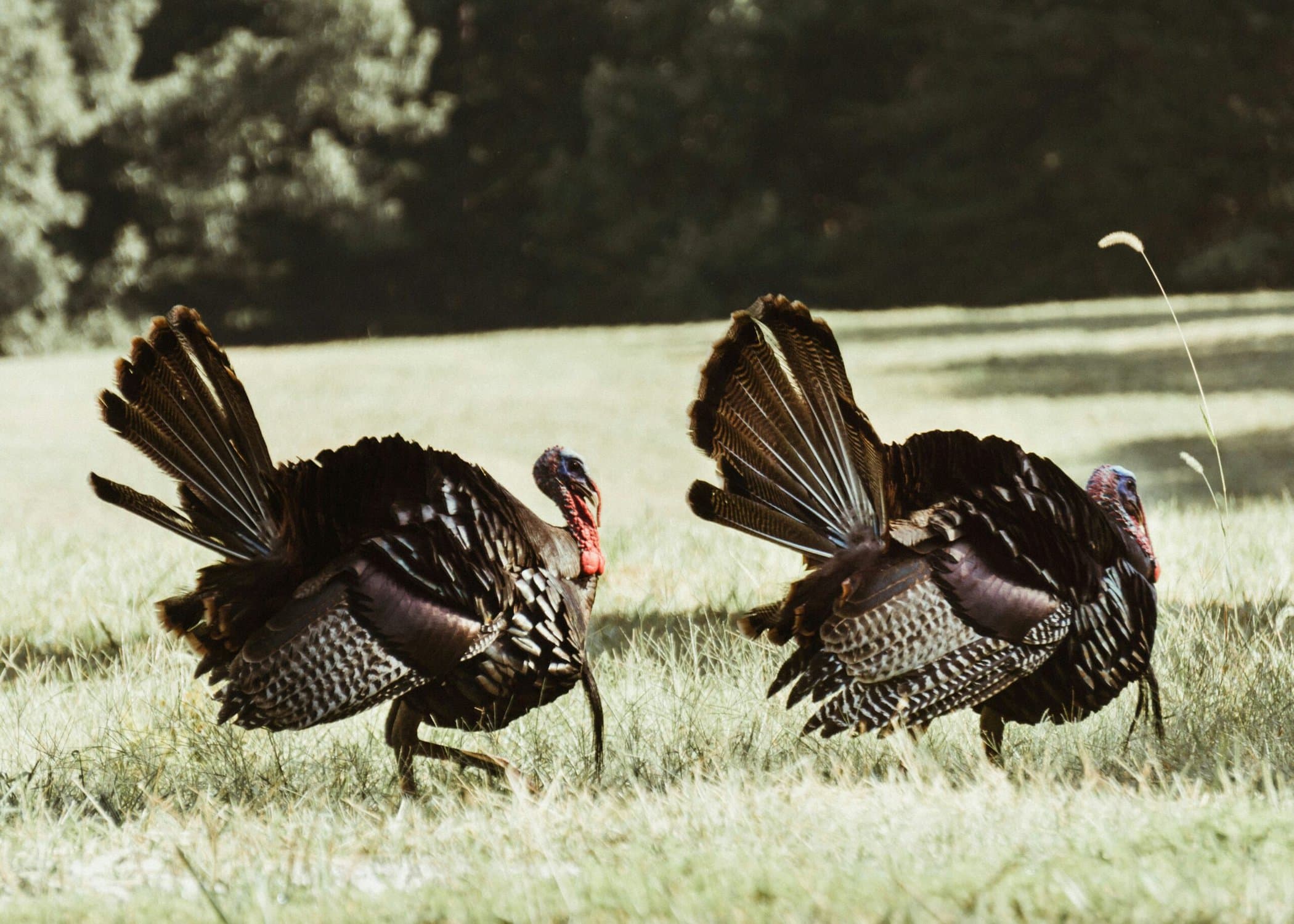The Wild Turkey is a truly classic American bird. In fact, Benjamín Franklin once joked that they may represent the United States better than the beloved Bald Eagle. Franklin may not have been serious, but his high esteem for Wild Turkeys still rings true.
Wild Turkeys are widespread throughout most of the United States and are often the biggest and most conspicuous visitors to suburban backyards around the country. Let’s explore how you can attract Wild Turkeys to your backyard or property.
Are Wild Turkeys Harmful?
The short answer is no. Not necessarily. But a harmless bird in its proper habitat can easily become a harmful bird when its population grows out of control or takes root in an unsuitable environment. Before we dig into how to attract Wild Turkeys, let’s first answer some basic questions about whether this is a good idea in the first place.
Are Wild Turkeys Invasive?
Wild turkeys are native to the United States but have been introduced to a lot more regions than the extent of their original range. In many areas, such as California’s Bay Area, Wild Turkeys were intentionally introduced by the Department of Fish and Wildlife for hunting purposes. Now, many years later, turkey populations are thriving.
But are all non-native birds considered invasive? No! In fact, Wild Turkeys are not generally considered invasive because they are not a threat to native species and are not too difficult to manage under normal circumstances.
Are Wild Turkeys Nuisance Animals?
This question is tricky because it doesn’t just depend on what region you live in but also the specific type of area. For example, densely populated suburban regions aren’t ideal for large flocks of turkeys. They can become nuisance animals when birdfeeders help their populations grow out of control and can cause damage by roosting in backyards, leaving droppings everywhere, scratching up cars, or even chasing people because they have become too comfortable in the presence of humans.
In these situations, Wild Turkeys are nuisance animals, but that doesn’t mean they should be totally unwelcome from your yard.
Is it Okay to Feed Wild Turkeys?
All wildlife can become to dependent on humans when they get used to eating from feeders. Altering animals’ natural behaviors is bound to have consequences. these consequences are smaller and easier to ignore with songbirds, but turkeys are much larger and can pose an issue more easily. That said, in some regions, feeding turkeys in the wintertime when snow is thick and their regular foraging patterns don’t work as well is a helpful boost to their populations.
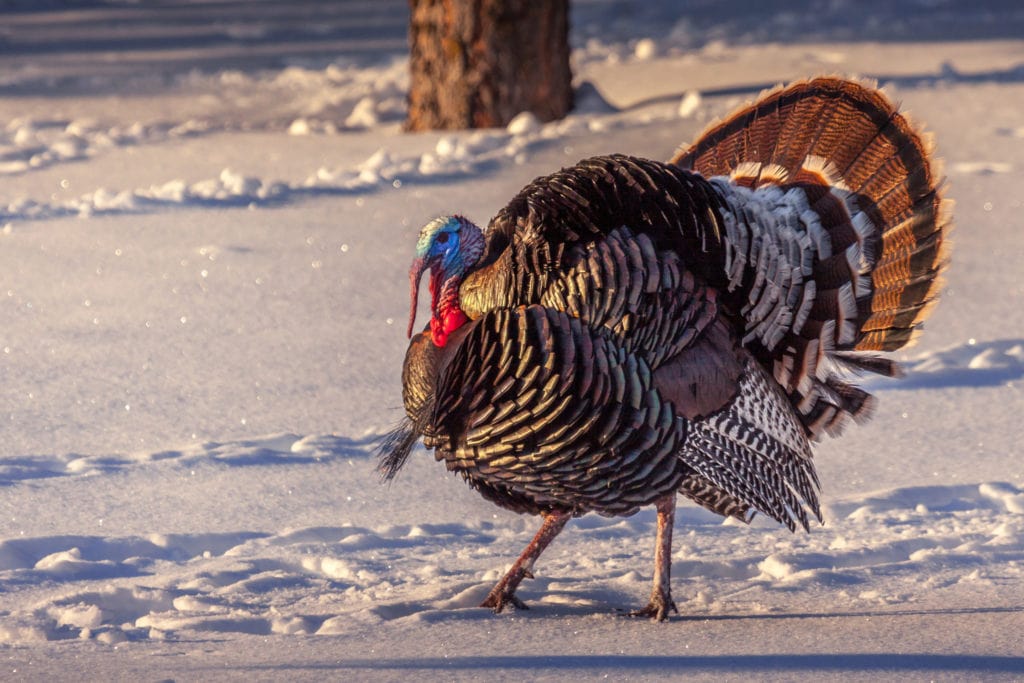
The most important thing you can do is check in with your local wildlife authorities and follow the guidelines that they provide. As a general rule, you shouldn’t feed any wildlife unless you’re prepared to research their diet, provide clean and disease-free feeding stations, keep a respectful distance so as not to disturb or habituate them to humans, and look into local laws and guidelines surrounding feeding in your area.
When Should You Feed Wild Turkeys?
You should only feed turkeys when it is allowed and recommended by your local wildlife authorities. And only feed Wild Turkeys if you live in sparsely populated rural or wooded areas. The last thing you want is for a Wild Turkey population to grow ill because they’re congregating unnaturally in an unsuitable environment or even eventually be euthanized because they’re becoming aggressive with humans.
What to Feed Wild Turkeys
Wild Turkeys don’t usually need your help finding food. They are excellent foragers and have grown numerous throughout the United States due to their opportunistic feeding habits. This means that the answer to “What do Wild Turkeys eat?” In California will be different than in Florida or New Hampshire. Generally, Wild Turkeys eat whatever is on the menu! They’ll eat anything from nuts to berries to insects to small vertebrates like lizards or frogs.
If you are certain that it is safe, legal, and recommended to feed Wild Turkeys in your area, then you can rest assured that Wild Turkeys will eat almost any birdseed that is accessible to them, but cracked corn is a turkey favorite. If possible, though, your best route is not to directly feed turkeys but to instead create a turkey-friendly space where your visitors can engage in natural behaviors without growing too dependent on unnatural food sources. We’ll work on that in the next section.
How to Attract Wild Turkeys to Your Yard — The Right Way
Your best bet for attracting Wild Turkeys to your property without having a negative impact on your environment is to create a wildlife haven that presents a safe habitat for Wild Turkeys and lots of other backyard visitors too. Let’s look at what you’ll need!
Start With Safety:
Making a turkey-friendly yard means making a yard that’s safe and attractive for all sorts of local wildlife. To get started, try thinking like a turkey. What would your priorities be when finding a new spot to hang out? If you thought “safety” then you’re on the right track. No wildlife likes to be harassed by predators and some of the most intimidating predators for turkeys might be scaring them off from your yard.
Your lovable goofball of a dog might seem totally harmless to you, but he or she can be a powerful deterrent to backyard visitors. So step one is to limit your pets’ access to the yard. This can mean keeping housecats in the house (this should ideally be done anyways as cats can have a pretty serious impact on your local bird population), only allowing your pets outside on a schedule and with supervision, or restricting a portion of your yard to act as your bird zone. A pet-free bird zone can be a great compromise as long as you keep Fido out.
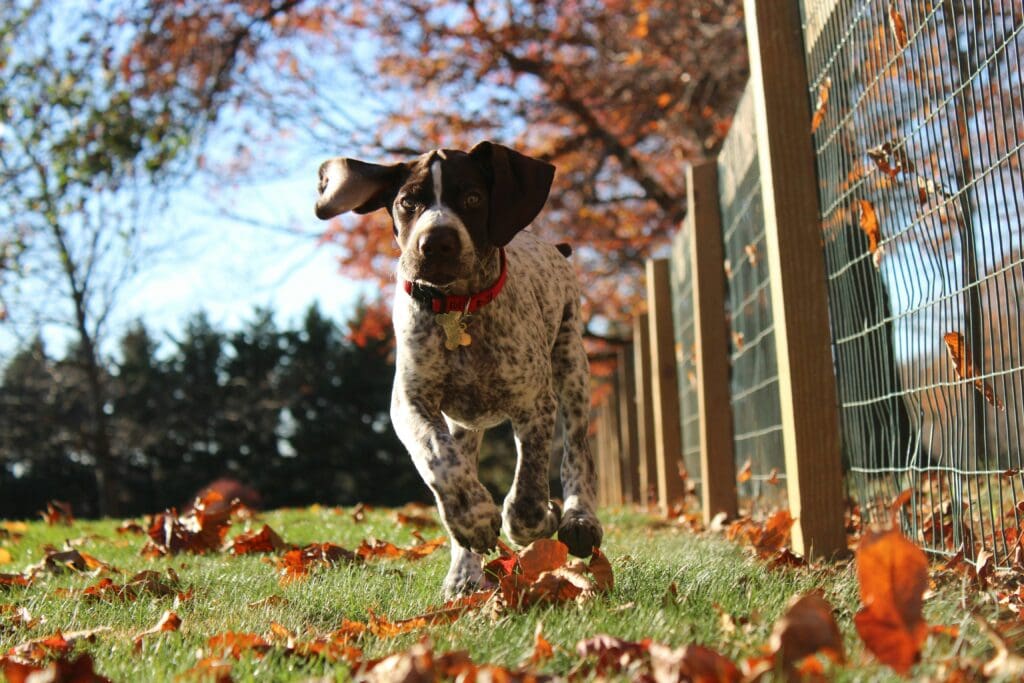
Another safety concern that you can help with is one that turkeys might not be totally aware of but nevertheless threatens their health: pesticides. There is a huge body of research dedicated to the impact of pesticides on birds, but suffice it say that weedkillers don’t just kill weeds. Likewise, rat poisons don’t magically disappear when a predator eats a poisoned rat. Pesticides introduce chemicals and poisons to the food web of your backyard’s habitat. Pesticides are a constant threat to birds and one you can help with by choosing to abstain from spraying pesticides in your garden.
Grow Foods That Turkeys Love:
Remember how we said that the ethics of feeding Wild Turkeys are a bit murky? Well you can reduce your chances of causing harm by making a turkey buffet that encourages natural foraging behaviors. Instead of putting out feeders, try creating a yard that’s naturally rich in foods that turkeys love to eat. Try:
- Nuts and berries! Almost any nut or berry-baring plant will do. Turkeys will eat anything from crabapples to poison ivy berries. For a super healthy yard that supports birds and wildlife, we suggest researching hardy native plants and picking nuts and fruits that naturally occur in your area. This will reflect the diet that Wild Turkeys near you are accustomed to eating. And—bonus! Favorite backyard birds like orioles and waxwings love chowing down on fruits and berries too.
- Wildflowers. Turkeys eat a lot of seeds. That’s why providing a variety of native seed-bearing wildflowers is bound to help make your yard a popular dining venue for Wild Turkeys. Try grabbing a pollinator blend of wildflower seeds for an easy way to attract Wild Turkeys while also attracting hummingbirds, butterflies, and bees.
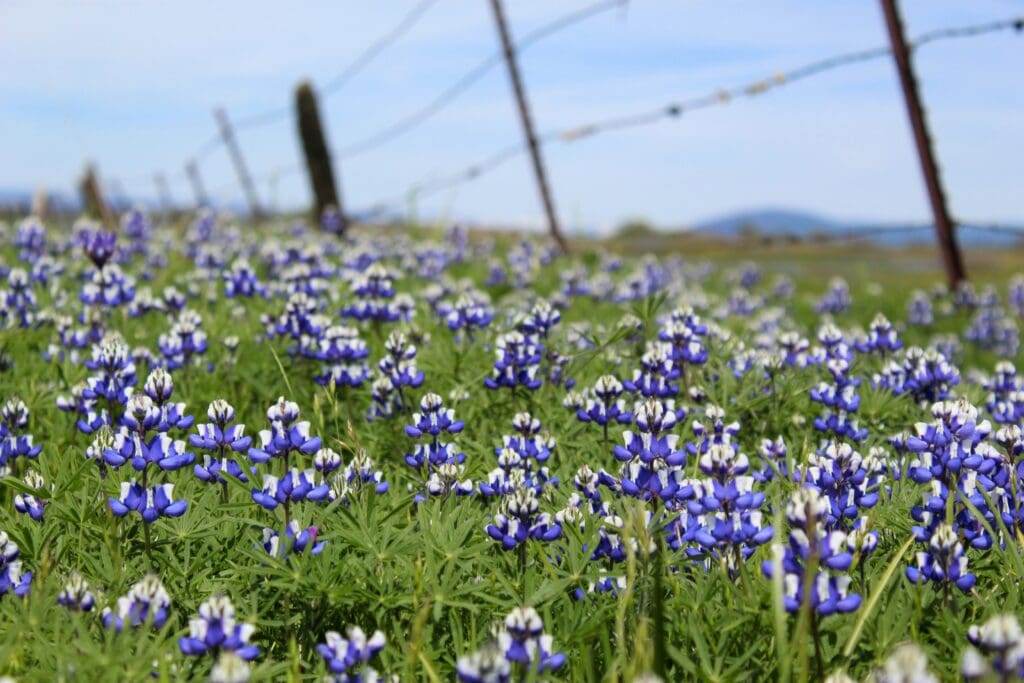
- Bugs. You can’t exactly grow bugs in your yard, but they make up a major part of a Wild Turkey’s diet, so you’ll want to cultivate them in order to attract your turkey pals. One of the easiest ways to do this is by allowing the natural leaf litter in your yard to stay. Bugs use leaves for shelter. An untidy yard is often teeming with life! Besides leaf litter, you could try installing some bug hotels. Fortunately, if you followed steps one and two and planted lots of native plants, then you shouldn’t have to do very much extra work to get plenty of yummy bugs in your yard.
Create Lots of Cover:
Turkeys might seem brash and fearless, but they are more comfortable in yards that provide cover from aerial predators. Fortunately, all of those native plants from the last section should help with this. In addition, if your yard lacks trees, try adding a few. Oak trees are a Wild Turkey favorite.
Turkeys also love to use tall trees to roost at night, so adding a few trees to your yard can help turn it into a 24/7 turkey sanctuary.
Add a Water Source:
A bird bath can be a game changer when it comes to getting that backyard bird sanctuary of yours cooking. Water is a precious resource that draws birds in. For Wild Turkeys, remember that they aren’t as dainty as songbirds and may topple tall feeders. Try providing a bowl on the ground or mounting a feeder on a railing that offers space for turkeys to stand.
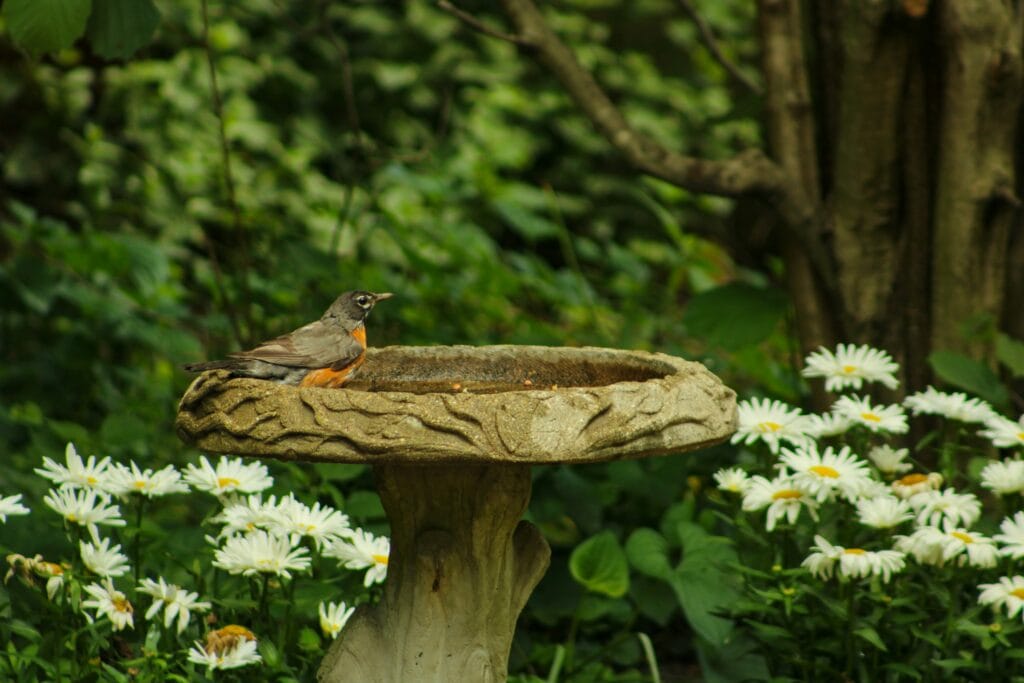
A few critical notes about bird baths: Standing water breeds mosquitos, but if this is a problem with your birdbath then you’ve already missed a critical step. Birdbaths absolutely must be emptied and sanitized regularly to prevent the spread of diseases. Change the water everyday and clean the birdbath weekly to keep your backyard visitors healthy and happy. This will also take care of the mosquito issue (nobody wants those!).
Final Thoughts
One of my favorite things about birdwatching is that learning about one bird always introduces me to others. Wild Turkeys are no exception and every step you take to create a habitat that’s healthy for them is also bound to enrich your backyard birding experience by attracting all sorts of visitors.
Before you embark on your turkey sanctuary journey, here are a few final things to keep in mind:
- The last few years have been some of the worst in terms of the H5N1 Bird Flu virus. For your safety and the turkeys, do not touch wild birds. Ensure that the places where they congregate are regularly cleaned and sanitized and report sick or dead birds to your local wildlife management department.
- Wild Turkeys are wild. It’s in the name. Keep them wild to prevent aggressive behavior and protect them from the consequences of human habituation.
- Nobody loves attracting birds to their yard as much as I do, but it is always our responsibility to act in the animal’s best interests. This means referring to the recommendations of your local wildlife management department before adding feeders or taking other steps that might interfere with natural behaviors.

